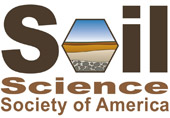Depth Stratification of Soil Organic Matter As an Indicator of Multiple Ecosystem Services.
Depth Stratification of Soil Organic Matter As an Indicator of Multiple Ecosystem Services.
Poster Number 21
See more from this Division: PosterSee more from this Session: Climate Change Adaptation and Mitigation
Friday, March 7, 2014
Grand Sheraton, Magnolia Foyer
Soil organic matter is a key component of soil quality that sustains many key soil functions by providing the energy, substrates, and biological diversity to support biological activity, which affects aggregation (important for habitat space, oxygen supply, and preventing soil erosion), infiltration (important for leaching, runoff, and crop water uptake), and decomposition (important for nutrient cycling). Conventional agricultural systems that lack residue cover and expose soil to high-intensity rainfall result in poor soil aggregation, reduced plant water availability, soil erosion, and off-site impacts of sedimentation and loss of soil nutrients to receiving water bodies. Conversely, conservation agricultural systems that minimize soil disturbance, keep soil covered with residues, and have a high level of biological diversity (in space and time) have been shown to improve ecosystem functioning to achieve greater agricultural sustainability. Depth stratification of soil organic matter fractions has been explored as a quantitative index to characterize soil quality. Profile distribution of soil organic carbon can be described with a simple ratio of two different soil depths (typically 0-5 cm and 20-30 cm) or via an exponential function (i.e., highest at the soil surface and exponentially declining with depth). Research data are exemplified to illustrate the potential for quantitative estimation of soil quality (and agricultural sustainability) through relationships of stratification ratio to various ecosystem processes and properties.
See more from this Division: PosterSee more from this Session: Climate Change Adaptation and Mitigation
Previous Abstract
|
Next Abstract >>
